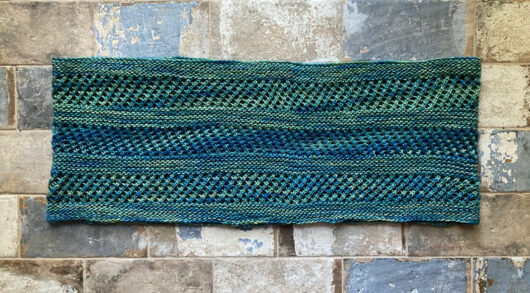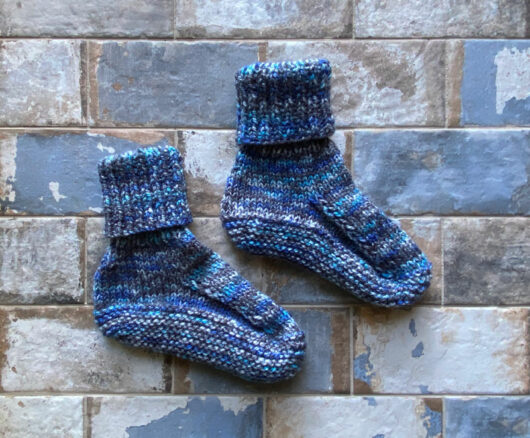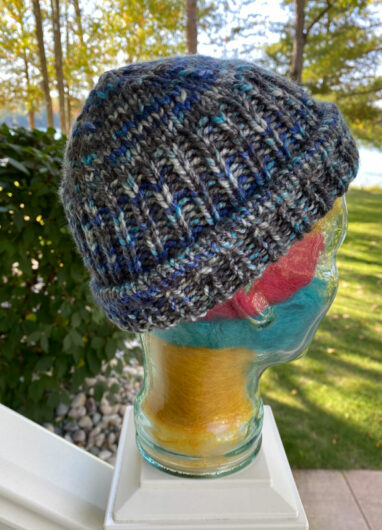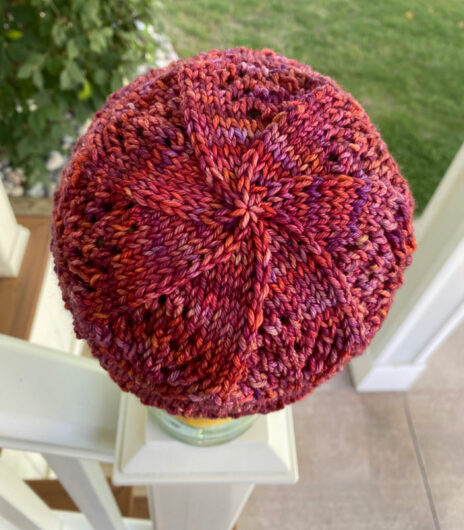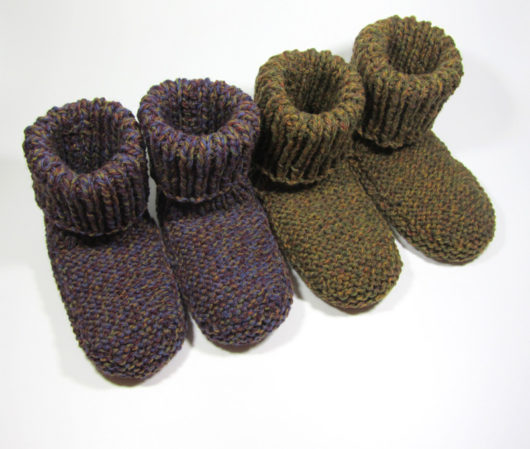
Maybe, possibly, well likely not, you remember that Nate the kindly rural mail carrier so loved his first set of these mittens that he asked if I could make him another pair. His special request was to ask if I could knit him a camo-colored pair. Nate is not a knitter and had no idea how difficult it would be to find a worsted weight yarn (or any weight yarn, actually) in a decent camouflage colorway. These mittens, knit in Patons Classic Wool Worsted in “Forest” (#77014), came as close as I could find in a wool yarn.
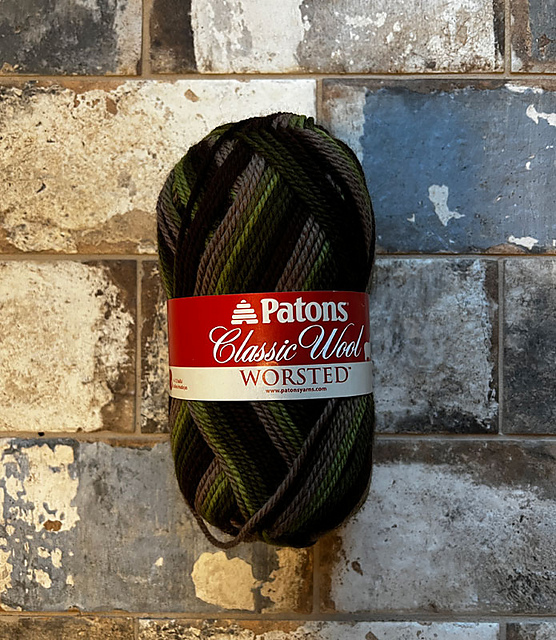
I don’t know whether or not this colorway’s been discontinued. But it was extremely difficult to find. I couldn’t find it on-line. I finally located one skein in the back of a bin in a shop near me. It was just barely enough yarn to complete the mittens. Shopping in person was more fun than I anticipated:
Me: I’m looking for some camo-colored worsted weight yarn. I really like Brown Sheep Lamb’s Pride but I don’t think it comes in any colorway that would work.
Dorinda: How about this, wouldn’t this work…(bringing me to a dark taupe shade of Lamb’s Pride)?
Me: (Puzzled.) No, I really want it to be camo-colored. It’s a special request.
Dorinda: Did you see this color…(bringing me to a darker shade of brown Lamb’s Pride)?
Me: (Even more puzzled). No, that’s all one shade.
Dorinda: What kind of camel are you knitting?
Me: Camo as in camouflage, Dorinda, not as in Bactrian.
Much laughter ensued. And then Dorinda found the one skein in the shop that worked out well.
This mitten pattern is Mittens From the Top, by Elizabeth Zimmermann. Nate thinks his new mittens are the cat’s meow.

But I wasn’t completely satisfied that Paton’s Classic Wool was going to give Nate the warmth of Lamb’s Pride. So I doubled up and knit him another pair, this time in the Lamb’s Pride Old Sage (M-69) colorway. Khaki, the green shade, is sort of in the same aesthetic as camo. There’s nothing much warmer than the Lamb’s Pride mix of wool and mohair.
Next up is a freebie slipper pattern that I’ve knit so many times it’s embarrassing. Nola’s slippers, by Nola Miller. This time I used King Cole Big Value Chunky. It’s a good non-pretentious 100% acrylic that will wear well and wash up easily

One modification to the pattern that I make is to use chunky or bulky yarn rather than knitting worsted weight doubled. I feel that worsted doubled produces such a stiff fabric that feet don’t so much get cuddled as manhandled. Plus, speaking of hands, mine don’t do well knitting worsted with doubled strands.

My other main modification of Nola’s pattern is that I extend the ribbing to form a nice deep cuff. Knit on US size 10 needles, following the pattern yields a slipper that fits a woman’s US size 8-10 foot.
Here’s another Nola’s, this time knit in Brown Sheep Lamb’s Pride Superwash Bulky. I love the name of the colorway: Explosive Berry. I haven’t used this yarn very often. Good yarn.

Here’s a look at the soles, showing my final modification. I work a 3-needle bind-off that shows up as the center garter stitch ridge. You could bind off and sew the seam instead. But why bother when the stitches are all live. As I recall, there’s an odd number of stitches so I just knit 2 of the stitches together as I bind-off.

Next up is one of Kris Basta’s freebie dorm boots variations: Better Dorm Boots Deluxe. This first pair is knit in Plymouth Encore Chunky. The XL size, with the body of the slipper knit on US Size 9 and the cuff knit on size 10 ends up fitting a woman’s foot from about a size 8 to a size 10 (US sizing).

That little bit of lacework in the cuff dresses up the slipper quite a bit.
Here’s another pair, this time knit in Hayfield Spirit Chunky, an 80% acrylic, 20% wool. It’s been many decades since I knit with Hayfield yarn. It just hasn’t come up in my knitting world lately. A yarn shop near me stocks the yarn and I was drawn to this appealing colorway (Orange Swirl). It turned out to be wonderful to work with. I’d buy it again in a heartbeat.

And finally, the same pattern in Cascade Yarns Pacific Chunky Multi in their Brights colorway. WEBS had it so seriously discounted that I gave it a try. It’s 60% acrylic, 40% wool. For this type of project, it worked out really well. Oops. Not doubles anymore, triples, I meant triples.
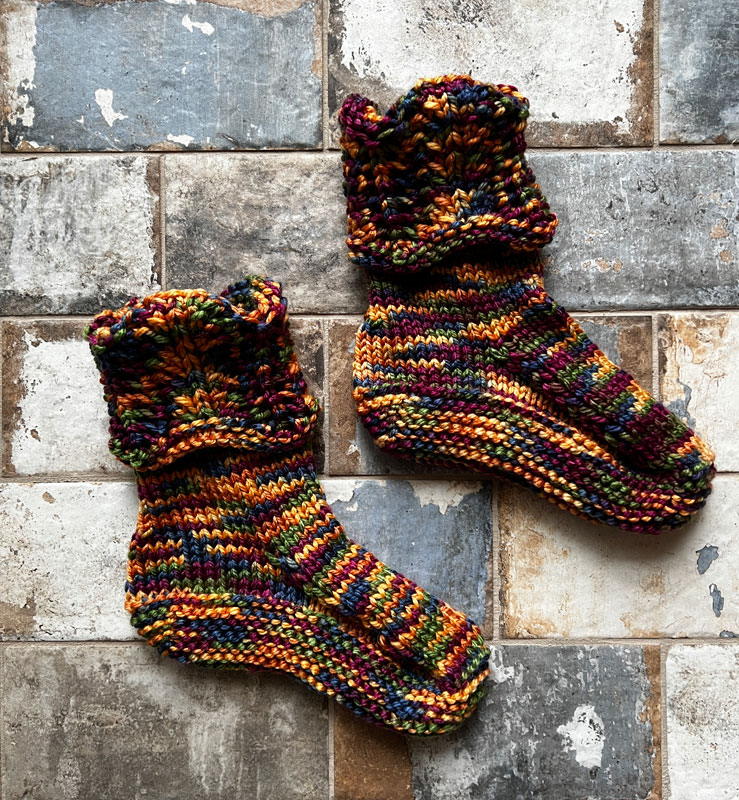
I know. I can get ridiculous with my knitting stutters. Double doubles, this time. Here are Basta’s Better Dorm Boots Deluxes again in Plymouth Yarns Encore Chunky.

My recipients always also receive a warning with my slipper gifts: they are slicker than slick and don’t even think about wearing them on hardscape floors. In fact, I call them bedsocks.
I totally enjoy having 100% confidence that what I’m knitting will work out well. Maybe that’s one reason for all these repeats. Plus, with so many of my knit recipients having chilly feet these grown-up booties get snatched up from my choose-your-knit baskets very quickly.

